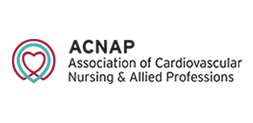Find out how the risk of cardiovascular disease differs for women and men
Cardiovascular disease is the leading cause of death for women and men globally, with most due to atherosclerotic cardiovascular disease. Approximately 20% of women in Europe die of ischaemic heart disease. Women with ischaemic heart disease are more likely to die than men of a similar age.
 The impact of some traditional risk factors for cardiovascular disease differs between sexes. For example, is the risk for cardiovascular disease increased at a lower blood pressure level in females than in males, and diabetes has a greater impact on cardiovascular risk in women versus in men. Females also have specific risk factors associated with pregnancy and menopause, and these life events could be ideal time-points for assessing cardiovascular health in women.
The impact of some traditional risk factors for cardiovascular disease differs between sexes. For example, is the risk for cardiovascular disease increased at a lower blood pressure level in females than in males, and diabetes has a greater impact on cardiovascular risk in women versus in men. Females also have specific risk factors associated with pregnancy and menopause, and these life events could be ideal time-points for assessing cardiovascular health in women.
Women have higher cholesterol levels than men after their fifth decade of life, and their “good” cholesterol tends to decrease after menopause. Hormonal changes after menopause induce the clustering of several risk factors for the heart and blood vessels such as increased blood pressure, weight gain, and raised lipid levels.
Compared with men, fewer women present with the classic symptoms of chest pain. They often report arm, back or jaw pain, dyspnea (shortness of breath), weakness, palpitations, light-headedness. Read more about warning signs.
Conventional risk factor scoring systems frequently underestimate the individual risk of women, so sex-specific scores should be used by health care practitioners.
The safety and efficiency of hormone replacement therapy are still debated, and you may discuss with your doctor if this is an option for you.



